Days 62 and 63: Personal reflection.
It would seem that we’re in the middle of the two-or-more-day-cake phase. These days it’s always make the cake layers, freeze them, come back again, and do something to them. This has its advantages though; imagine this: you’re cutting a cake. Horizontally. Would you rather do this when the cake is nice and soft, hot, tender, and fresh from the oven? Or would you rather do it when the cake is a solid and forgiving block of what is basically frozen butter with a little starch, sugar, and egg thrown in to keep up appearances? Me too. So let’s proceed with the understanding that these creations of ours can be accomplished by actual human beings, right in our own homes. The two-day aspect isn’t continuous, so don’t be daunted. It’s not quite a lot like painting your house.
The particular Two Day Cake we cranked out this week was a miroir (meer-WAHR). The miroir (“mirror”) is a classic French dessert composed of layers of sponge cake which are moistened with syrup, filled and iced with a bavarois, or Bavarian, and topped with a thin layer of nappage. For clarification, allow me to state that the Bavarian I’m talking about here isn’t a person dressed in short pants with suspenders and a jaunty little feathered cap. No, this is a different kind of polka-dancer, where a purée of fruit (or another base of similar texture) is mixed with gelatine, and then folded together with whipped cream. The tricky part is the folding. People are afraid of folding, and understandably so; if you do it too forcefully, whatever it is you’re folding will deflate. Why not simply do it slowly, then? The Bavarian is the perfect answer. The gelatine which is melted into the base must necessarily be slightly warm, while the cream must be at least cool. The trick in folding them together is to do it gently enough so that the whipped cream isn’t completely deflated, but quickly enough that the gelatine doesn’t set when it comes in contact with the cream. Failing to accomplish the latter would result in a creamy sludge with what would seem like Gummy Bear droppings scattered throughout it, and we clearly can’t have that. Nappage (nah-PAZH), from way back in our first week, is essentially jelly with extra pectin. To construct the cake, you place a layer of sponge in a cake ring (think cake pan without sides), moisten it, top it with Bavarian, another layer of cake, and so forth, ending with a perfectly even and smooth layer of Bavarian. You chill this until set, and then pour a pool of warm nappage on the top, creating the mirror effect for which the dessert is named. Using a cake ring is doubly exciting. Not only can you create a cake with tremendously even sides, but when the time to remove the ring has come, you get to blowtorch it until it’s loose enough to simply slip off.
Some people have issues with the Bavarian (which is, by the way, what Bavarian cream really is; that stuff in donuts is a lie). The texture, admittedly, is a little unconventional, being somewhere between mousse and Jell-O, and nothing goes worse with cake than Jell-O. It’s also understandably off-putting to consider a gelatinous dairy product. Once you get past these things, though, it’s a pretty enjoyable dessert. The one I fashioned was strawberry (and before you raise the hypocrite alarm, let me state that both the purée and the nappage were (presumably) made from fruit when it was in season), decorated on top with some more voluntary cornet work.
What’s happening to me!?
Sunday, April 29, 2007
Subscribe to:
Post Comments (Atom)



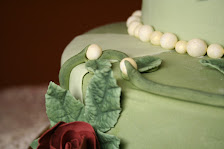

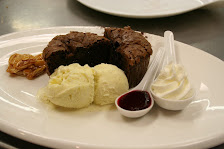
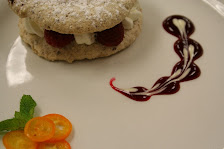
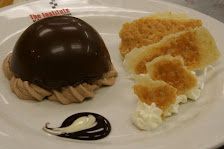
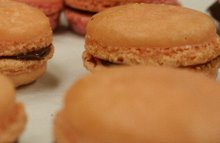
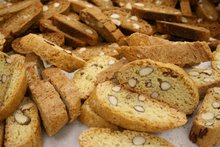




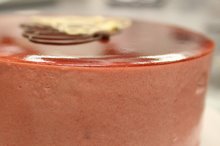



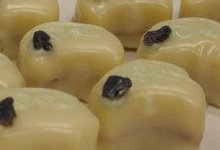
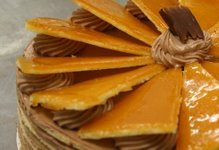



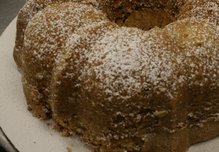
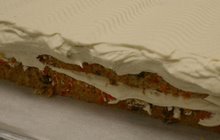


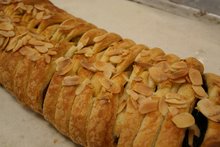






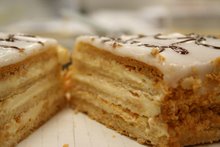
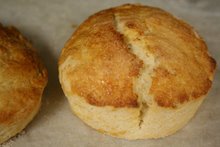















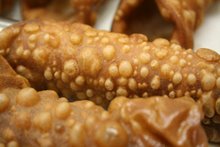


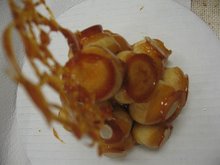
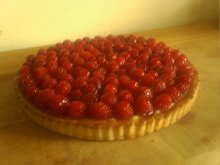


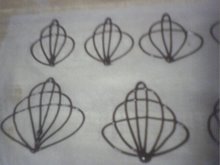


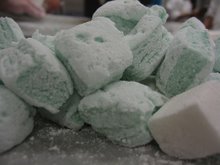

No comments:
Post a Comment